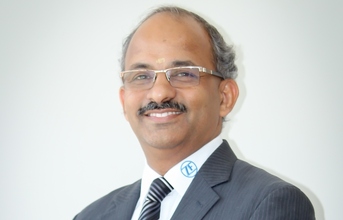
How has been the last year for the company in India? How do you look at this year?
In 2018, we brought about some changes that reflect the increasing importance of the Indian market, in the ZF world. India became a stand-alone region in the ZF organization with a direct representation by a dedicated responsible Member at the Board of Management.
Considering production, India benefits in two ways. On the one hand, ZF is continuing its successful local for local approach, by expanding capacities to assure that the growing local customer demands in the future can be fulfilled. However, India is also growing as an important production location for ZF in supplying to their global customers. Today, we are already exporting Commercial Vehicle chassis components as well as occupant safety system components. The Group continued its investment for extending its local production facilities such as the Plant expansion in Pune, the joint venture plant inauguration at TRW Rane in Trichy and the new axle assembly line in Coimbatore. Furthermore, the Indian Technology Center (ITC) in Hyderabad, an engineering hub for ZF group worldwide, has been steadily growing, outperforming the planned numbers
BS VI regulations are to be implied from next year. How are the Indian automotive and auto components industries are getting ready for it?
The new BS VI emission regulations and axle load requirements becoming effective for new vehicles delivered after April 1, 2020 foster truck manufacturer and fleet owner to shift up gear. The race is up for the most price competitive solutions to fulfil the new standards. ZF offers lightweight chassis components as well as transmissions to supports OEM customers in the development of more fuel-efficient vehicles. Systems and components with a reduced weight, such as dampers, tie rods or transmissions have a direct effect on the fuel efficiency. Other solutions such as clutches and automated manual transmissions help indirectly. All these support the fleet owner to keep the Total cost of ownership lower even though the initial costs are higher. Shifting a higher torque with more gears will increase driver fatigue. With an automated manual transmission such as "EcoTronic mid" model of ZF, the rides will become much more comfortable and will also keep the running costs under check, as there will be reduced dependence on the skill and experience of the driver.
Globally, the trend of lightweighting is seen in the industry for few years now. How have you been helping OEMs achieve success in this area?
Lightweight design is a key technology when it comes to reducing vehicle energy consumption. For the passenger car chassis, the company has opted in favour of several, mutually complementing solutions: Engineering focuses on the structural optimization of components and the integration of functions. In addition, alternative materials, such as aluminium, carbon fibre reinforced plastic (CRP) or glass-reinforced plastic (GRP) are used, and advanced production procedures are applied. These approaches help to reduce the weight of control arms, tie rods, suspension struts, dampers and entire axle systems.
Weight reduction in the passenger car chassis is not only an important aspect for electric vehicles where reduced weight results in an increased range and thus greater acceptance, saving weight on board, has advantages in all vehicles. Fuel consumption and, in parallel, CO2 emissions are consequently reduced in conventionally motorized passenger cars as well. At the same time, lower non-suspended masses lead to greater driving dynamics and more comfort and safety.
Also, there is an increasing trend towards going green in the automotive industry. How do you look at it?
As an innovative and sustainable technology provider, our company is working on solutions to support this trend. The Group is constantly extending its portfolio of products to reduce CO2 emissions, including solutions such as hybrid and electric drives for all kinds of vehicles. In addition, ZF is also addressing sustainability on a corporate level to meet its responsibility toward people and the environment by implementing a range of different environmental protection measures. This responsibility is anchored in the company's values and protects against entrepreneurial risks - in the areas of compliance, customer relations and reputation - while improving operating efficiency and benefiting the environment. Conserving natural resources is the fundamental principle of ZF's environmental strategy. A corresponding policy therefore includes essential areas of activity such as climate protection, the environmental impact of production, eco-friendly product design and environmental performance improvement. The "design for environment" principle puts particular focus on environmentally friendly product design. Relevant aspects must be proven by means of a checklist at various steps in the development process, taking into account environmentally friendly manufacturing and manufacturability, wear, serviceability and repairability, recyclability and environmentally sound materials.
How do you look at the emergence of e-vehicles? How do you look at e-vehicles' future in India?
E-vehicles and electrified powertrains will play a vital role when it comes to reaching emission targets. However, electrification should not only be purely reduced to battery-electric drives. Putting all eggs in one technology basket will surely be a mistake. ZF promotes a discussion that is open to all types of technology with a coexistence of hybrids and all-electric drives for a very long time.
The hybrid's greatest strength is its flexibility. A modern plug-in hybrid is the all-round drive for family cars. In inner cities and environmental zones, on short and medium-range routes on the way to work and to buy groceries, they drive all-electrically and thus with zero emissions. Operated conventionally, the same vehicles can also run a long distance, for example when going on holiday by car.
With regard to the Indian market, plug-in hybrids can enable a fast market launch for electrification, as long as there is no viable overall concept, let alone implementation, when it comes to loading stations, network structure and payment systems. In this area, there is a need for action that will last for many years.
END


























